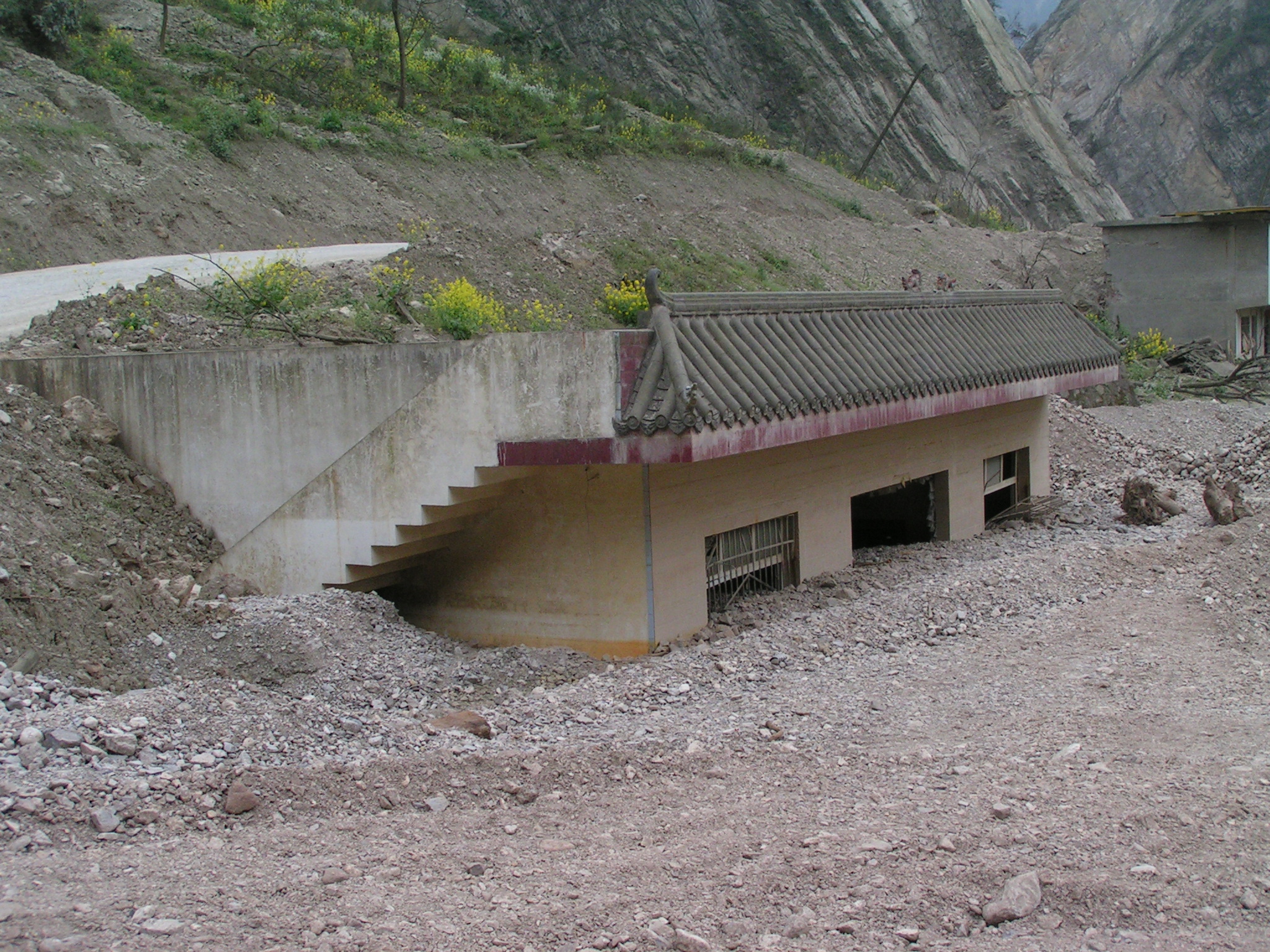23 October 2020
Simple actions to survive a landslide
Posted by Dave Petley

Simple actions to survive a landslide: an inundated house. Note the grate on the window – this can prevent occupants from exiting the building.
Simple actions to survive a landslide
Surviving a landslide is difficult. Victims of landslides are typically killed by blunt trauma or by asphyxiation. Mass movements involve large amounts of dense material, often traveling at high speed, and water. For the most part survival depends on either being on the periphery of the landslide or being protected by a structure, such as a building or a car. Strangely though, there have been very few systematic studies of the causes of loss of life in landslides or of the circumstances in which people survive in buildings. Understanding how and why people survive can provide valuable advice for those who find themselves at risk.
A new paper has just been published in the journal Geohealth (Pollock and Wartman 2020 – it is open access) that explores these issues. The authors have compiled a dataset of landslides that have killed people who were located in buildings. The dataset includes 38 different landslides, impacting 95 buildings involving 334 people, of whom 157 were killed. Most of the examples are from the United States, but there is information from other parts of the world as well, including India, Brazil and Australia.
There is a huge amount of richness in the data, although the authors are careful to note that there are considerable uncertainties. But it is clear that a small number of key factors can determine survival in a building. A key element is the depth of the landslide debris. If the inundation depth is over six metres then the likelihood of survival is very low. For depths of less than this survival is possible if the victim is protected by a building of appropriate strength.
On this basis Pollock and Wartman (2020) provide some advice on how to survive a landslide in a building:
- Be informed about potential hazards and talk to people who have experienced them.
- Move areas of high occupancy, such as bedrooms, upstairs, or to the downhill side of a home.
- Escape vertically (within the building – i.e. move upstairs).
- Identify and relocate to interior, unfurnished areas – these are less likely to collapse and the absence of furniture reduces the risk of being crushed.
- Open downhill doors and windows – this allows debris to exit the building.
- Continue to make noise and motion – most rescues are carried out by neighbours, but they need to be able to find you.
On the other hand, the authors also note a couple of actions that should be avoided:
- Opening a door out of curiosity.
- Sheltering behind or beside large furniture.
The latter is quite surprising perhaps, but the authors note this example:
When a debris flow in Los Angeles inundated the home of a family of four, the two teenage children almost drowned from being pinned between a bed and a wall by the force of the flow, while the parents, buoyed on the top of the bed, survived unscathed.
This is an incredibly useful contribution. I hope that it survives more studies of this type, extending the work to include more events in more locations, and to include people who are, for example, in a vehicle.
.


 Dave Petley is the Vice-Chancellor of the University of Hull in the United Kingdom. His blog provides commentary and analysis of landslide events occurring worldwide, including the landslides themselves, latest research, and conferences and meetings.
Dave Petley is the Vice-Chancellor of the University of Hull in the United Kingdom. His blog provides commentary and analysis of landslide events occurring worldwide, including the landslides themselves, latest research, and conferences and meetings.
I found the high survivability in flows of 1-6 meters deep was surprising to me given the incredible power that we see in even shallow landslides and debris flows. Do you (or other readers) have any thoughts on the lack of a correlation between death rate and depth in these flows? In any case, this paper made me rethink many of my assumptions about the survivability of landslides. Thank you for highlighting it.
Good ref. Thanks for sharing.